New Mars Forums
You are not logged in.
- Topics: Active | Unanswered
Announcement
#276 2024-03-25 09:30:18
- Calliban
- Member
- From: Northern England, UK
- Registered: 2019-08-18
- Posts: 4,240
Re: Trains on Mars - Could a rail system provide martian need
Both the moon and Mars are subject to much greater temperature extremes than we see here on Earth. What would happen to a railway line on the moon, if it is subjected to thermal transients between 100K and 400K? I think thermal expansion and contraction will distort the rails, destroying your track. The only solution is the keep the rails within a defined temperature range. This has been a problem in the UK in periods of hot weather. Imagine how much worse it would be on the moon.
"Plan and prepare for every possibility, and you will never act. It is nobler to have courage as we stumble into half the things we fear than to analyse every possible obstacle and begin nothing. Great things are achieved by embracing great dangers."
Offline
Like button can go here
#277 2024-03-25 10:10:45
- GW Johnson
- Member
- From: McGregor, Texas USA
- Registered: 2011-12-04
- Posts: 6,083
- Website
Re: Trains on Mars - Could a rail system provide martian need
We do it with expansion joints in Texas. Same for the paved highway bridges.
If you do it as a truck train on a graded road, all that goes away, except for tire embrittlement in the extreme cold. Heating tires is a feasible thing to consider.
GW
GW Johnson
McGregor, Texas
"There is nothing as expensive as a dead crew, especially one dead from a bad management decision"
Offline
Like button can go here
#278 2024-03-25 10:41:52
- Calliban
- Member
- From: Northern England, UK
- Registered: 2019-08-18
- Posts: 4,240
Re: Trains on Mars - Could a rail system provide martian need
We do it with expansion joints in Texas. Same for the paved highway bridges.
If you do it as a truck train on a graded road, all that goes away, except for tire embrittlement in the extreme cold. Heating tires is a feasible thing to consider.
GW
In the UK, all track was segmented until the 1980s, when welded rails were introduced. The segmented tracks with expansion gaps were phased out because passengers disliked the noise and vibration at high speeds. The UK is mild enough to get away with having welded track unless the summer is unusually hot. Presumably, segmented track would not be a problem on the moon or Mars, where trains would move slowly.
I looked up the thermal expansion coefficient of mild steel
https://www.engineeringtoolbox.com/ther … d_859.html
It is 5.9E-6m/m.K. So a 10m rail will expand 5.9mm for a 100K temperature rise. I think to make expansion joints work on the moon, rail segments would need to be short. Otherwise, train wheels would cause wear across the gap. To limit wear and vibration, trains should travel slowly.
I agree that dirt tracks are a far more affordable option. A railway on the moon or Mars would be a huge capital expenditure.
Last edited by Calliban (2024-03-25 10:42:42)
"Plan and prepare for every possibility, and you will never act. It is nobler to have courage as we stumble into half the things we fear than to analyse every possible obstacle and begin nothing. Great things are achieved by embracing great dangers."
Offline
Like button can go here
#279 2024-03-25 10:55:18
- tahanson43206
- Moderator
- Registered: 2018-04-27
- Posts: 23,247
Re: Trains on Mars - Could a rail system provide martian need
For Calliban re report of Apache error in Housekeeping .... Thanks for the report! I think the contents of the post is the issue, not the topic where it is introduced. On the other hand, if you put the exact same post in another topic that would be good to know.
I ** just ** thought of a possible mechanism for reporting posts that generate these errors! You can send the offending post to newmarsmember@gmail.com
The forum has an email subsystem that is not perfectly reliable, but which does work (when it works). Please consider using that mechanism if a post is refused.
I have found (through experiment) that a reject event happens with a small string, such as an individual word. My guess at this point is that the subsystem that allows us to perform searches so efficiently may be involved.
***
I logged in to update this topic with an observation about possible material that might expand in one direction more than another.
What does it mean for a material to be anisotropic?
A material that is anisotropic exhibits properties that are different dependent upon the directionality, location considered on the material, or where and how force is applied to the material. Anisotropic materials have properties of the material that are considered directionally dependent, such as in the case of wood.Isotropic vs. Anisotropic Materials | Definition & Examples - Lesson
study.com
https://study.com › academy › isotropy-definition-materi...
Search for: What does it mean for a material to be anisotropic?
I bring this up because GW Johnson wrote about just such a material recently, in the heat shield topic.
It may not be available for alloys of iron, such as rails, but it sure would be nice if rails could expand vertically rather than horizontally. My guess is that iron expands equally in all directions with temperature.
Rails could be made differently than they are now ... they could be made of sheets that slide past each other with temperature, so that continuous support would be provided to carriages as they traverse the section of track, while the track itself contracts and expands as necessary.
No doubt the cost of manufacture of such a rail would be greater than is the case with traditional rails. I assume those are cast and then rolled to give them strength. I saw a movie about making steel in 1930 on CSPAN recently. The process was similar to the process for I-beams.
My guess is that the process is similar in 2024.
(th)
Offline
Like button can go here
#280 2024-03-25 11:53:28
Re: Trains on Mars - Could a rail system provide martian need
Thermal expansion/contraction problems are way worse on the Moon than anywhere on Earth. It's a fun design question though. I'd do something like this (probably occurring over a much longer distance than shown here). Rails in the top of the picture allowed to slide against the rail on the bottom but shall always overlap. Ties, probably stiffer at the joint, keep everything aligned left to right. Rails are probably made stiffer also at the joint to partially compensate for tapered shape.
The ability to use regular steel or maybe aluminum (price difference much smaller if both are smelted electrically: See this post) is going to be pretty critical for rail to make sense. If you're using fancy temperature insensitive alloys you might as well just use trucks.
Last edited by JoshNH4H (2024-03-25 12:47:00)
-Josh
Offline
Like button can go here
#281 2024-03-27 06:55:41
- GW Johnson
- Member
- From: McGregor, Texas USA
- Registered: 2011-12-04
- Posts: 6,083
- Website
Re: Trains on Mars - Could a rail system provide martian need
Josh:
That's certainly a more extreme expansion joint concept. Those rails do bend elastically, but the stiffness is high for those shapes, even laterally. The radius of curvature would have to be very large. It would need to stay elastic, not to introduce distortions that would screw up the functioning of the track.
I wonder if one couldn't do the same thing 90-degrees out of plane, with a long parallel overlap of one rail over the other. Or maybe one rail as a tongue inside a split in the other? There's got to be a way to create a large expansion gap, and still support the wheels as they roll by.
Interesting problem. I never really thought about that particular one before.
GW
GW Johnson
McGregor, Texas
"There is nothing as expensive as a dead crew, especially one dead from a bad management decision"
Offline
Like button can go here
#282 2024-03-27 07:19:59
- tahanson43206
- Moderator
- Registered: 2018-04-27
- Posts: 23,247
Re: Trains on Mars - Could a rail system provide martian need
I am hoping to capture the energy flowing right now! For JoshNH4H ... since you have demonstrated a (most welcome) ability to interact with the AI image creation software, please see if you can pick up on GW's suggestion for parallel tracks that are able to carry the train wheel across gaps without a noticeable click effect.
The amount of material required would (of course) be greater than needed for a continuous rail, but the advantages would be considerable, so the extra investment might prove justifiable.
It seems possible that wheels might be configured as pairs, so that the load is carried by one while the other is over an expansion joint.
In working with DALL-E (via ChatGPT4) I have found that engineering drawing is NOT something the developers were after. There are various examples of DALL-E's work scattered around the forum archives, if anyone is interested.
(th)
Offline
Like button can go here
#283 2024-03-27 09:47:02
- kbd512
- Administrator
- Registered: 2015-01-02
- Posts: 8,337
Re: Trains on Mars - Could a rail system provide martian need
Is there any reason why the suspension system of the rail car cannot be altered to account for track width variations from extreme temperatures?
For example, we could use modestly curved wheels (not connected by a solid axle, obviously) and rail surfaces. We're dealing with 1/6th to 2/5th Earth gravity. This should be doable.
Offline
Like button can go here
#284 2024-03-27 10:05:26
- tahanson43206
- Moderator
- Registered: 2018-04-27
- Posts: 23,247
Re: Trains on Mars - Could a rail system provide martian need
For kbd512 re #283
Your introduction of width to the discussion is both surprising and interesting, because I was under the impression the focus was on the length of the track, and the tendency to buckle without linear spacing.
The width of the span between rails is something this discussion had not considered until now.
The width of the rail is also going to change with temperature as you pointed out.
This topic is developing into a bit of a challenge for our members to tackle.
(th)
Offline
Like button can go here
#285 2024-03-27 11:03:57
- GW Johnson
- Member
- From: McGregor, Texas USA
- Registered: 2011-12-04
- Posts: 6,083
- Website
Re: Trains on Mars - Could a rail system provide martian need
Hmmm, the coefficient of thermal expansion for steel is 6.45 x 10^-6 in/in-F. Which is also 0.4055 ft/mile-F in different units. Let's assume a 200 F temperature difference hot-to-cold.
If the tracks were the same gauge as here in most western nations, the distance between rail heads is 4 ft 8.5 inch = 56.5 inches. If the ties were steel, the later change in gauge is 6.45 x 10 -6 * 56.5 * 200 = 0.073 inch. That's pretty trivial compared to the gauge variations used going around curves (it's widened about 0.1 to 0.2 inches).
If the ties were wood (not something you could use on Mars), the thermal expansion coefficient is somewhere around 20 x 10^-6 in/in-F. That would raise the change in gauge to near 0.2 in, within what they have to accommodate on curves anyway.
If the ties were concrete, as is done on high-speed routes, the thermal expansion coefficient is near 5 x 10^-6 in/in-F, comparable to steel ties (likely on Mars).
On the other hand, let's say we use welded rail in mile-long lengths between expansion joints. Using the other form and 200 F temperature change, the change in each mile-long length of welded rail is .4055 ft/mile F * 1 mile * 200 F = 81.1 ft. That's a real problem, aggravated by the huge temperature change. We do not want long lengths of welded rail on mars!
Let's say we just bolt together 39-ft (468 in) lengths of rail, with an expansion joint at each joint. 6.45x10-6 * 468 * 200 = 0.604 inches. You could do a sort of vertically-oriented tongue-in-groove feature only about an inch long, and thereby easily eliminate the annoyance and wear of wheels jumping 0.6 inch gaps between rail heads. The rails become more expensive to make, though, since stock rail here is just square cut, and has been for almost 200 years now.
GW
Last edited by GW Johnson (2024-03-27 11:05:30)
GW Johnson
McGregor, Texas
"There is nothing as expensive as a dead crew, especially one dead from a bad management decision"
Offline
Like button can go here
#286 2024-03-27 12:30:03
- tahanson43206
- Moderator
- Registered: 2018-04-27
- Posts: 23,247
Re: Trains on Mars - Could a rail system provide martian need
GW created an image to go along with the description in Post #285

(th)
Offline
Like button can go here
#287 2024-03-27 12:47:07
- kbd512
- Administrator
- Registered: 2015-01-02
- Posts: 8,337
Re: Trains on Mars - Could a rail system provide martian need
tahanson43206,
The Spanish Talgo trains apparently have independent axles to adjust for curves, which means there's no hard connection to the axle for both sets of wheels. That's what I was getting at. Would that allow us to have some thermal expansion of the tracks without derailment?
Perhaps the wheel flange could be slightly elongated. One or both wheels could cause the train car to "dip" slightly as the metal expands, meaning ride slightly lower or higher on the rails, with appropriate wheel and track geometry to maintain a more or less constant bearing surface area wheel and orientation to the track. This would require a slightly curved rail and a curved wheel flange with a non-constant curve to it. Train tracks on earth are flat rails, and the wheel flanges are mostly flat.
As Josh pointed out, we don't have extreme temperature change problems to solve here. Maybe bearing surface modifications are required so that tracks can expand and contract more. I think this is more of a manufacturing annoyance than an unsolvable problem.
Offline
Like button can go here
#288 2024-03-27 13:37:31
- tahanson43206
- Moderator
- Registered: 2018-04-27
- Posts: 23,247
Re: Trains on Mars - Could a rail system provide martian need
For kbd512 re #287
Thanks for introducing the Spanish Talgo train suspension system to this topic.
Google has a ** lot ** of citations on this subject ...
What does Talgo mean in Spanish?
Tren Articulado Ligero Goicoechea Oriol
Talgo (officially Patentes Talgo, SAU) is a Spanish manufacturer of intercity, standard, and high-speed passenger trains. Talgo is an abbreviation of Tren Articulado Ligero Goicoechea Oriol (English: Lightweight articulated train Goicoechea Oriol)
While design of a train network on Mars has some special challenges, above and beyond those on Earth, the ability to curve around land features at high speed would seem (to me at least) to be a useful capability.
If anyone is curious, this search string produced a number of videos along with text citations:
spanish talgo trains independent suspension system
(th)
Offline
Like button can go here
#289 2024-03-27 16:15:19
- GW Johnson
- Member
- From: McGregor, Texas USA
- Registered: 2011-12-04
- Posts: 6,083
- Website
Re: Trains on Mars - Could a rail system provide martian need
Thee seems to be a lot of misunderstanding about how train car trucks have been constructed over the last 2 centuries. The wheels are solidly attached to each end of each axle, usually by a splined fit that is also a press fit. The two wheels and axle always rotate as a single unit, inside lubricated sleeve or roller bearings at each end of the axle. The actual wheel bearing surfaces are conically tapered outward, from the inner flanges that keeps the wheel-axle unit from leaving the rails.
The spacing between the wheel flanges is significantly less than the spacing between the rails, so that it can ride symmetrically on the straight track, but asymmetrically on curves. The outer flange at worst case rubs the inside of the outer rail head during a turn, where the wheel contact diameter is larger. The inside flange is well inward of the rail head on the inside rail of the turn, where the wheel diameter is smaller. That difference in diameters allows a solid axle/wheel unit to make the turn without slipping any wheel upon the rail. It just "floats" until the diameter ratio is "right" for the curve radius. It only actually rubs flange on rail head in the extreme case.
Some European railroads have smaller cars with a single axle and only 2 wheels, at each end of the car. These need not be articulated to make the turn, but can bear lower weight, simply because there are fewer wheels to carry that weight. You have to distribute that weight across multiple contact points, or you risk deforming the rails. It's very similar to distributing the road truck's weight on 18 or more wheels, to reduce any one point of contact's pressure below that which immediately fails the pavement or roadbed.
Typical American railroad practice uses a 4 wheel (2-axle) truck at each end of the car (there are some few with 6 wheels on 3 axles). These must be articulated in order to properly make the turn on a curve. They can carry far more weight, especially if the rails are bigger and stronger, which is why we no longer use 4-inch rtall rails at 70 lb/yard of length. We now use 7 or 8 inch tall rails at approaching 200 lb/yard of length. It is now illegal to run any locomotive upon the smaller rails.
Modern US hopper cars often gross over 400,000 lb (200 US tons). I've read the specs on the sides of rail cars at crossings to over 420,000 lb (210 US tons) in many cases. About 1/4 to 1/3 of that is empty car weight, depending upon whether the bulk structure of the car is aluminum or steel. The rest is carried payload. Coal hoppers are open-topped, the others carry grain in closed-top cars to keep the rain out. They don't care about rain wetting coal. They do care about rain wetting and ruining grain. The very largest box cars are now approaching the same gross weights. Tank cars usually are somewhat smaller gross weight ratings, as are gondolas and flat cars.
Typical modern diesel locomotives use a 6-wheel truck (3 axles) at each end off the unit. These axles are driven electrically, using electricity generated by the diesel engines driving generators in the locomotive. These wheel trucks are also articulated, in order to make turns without slipping any wheels.
It's a very old solution, but it works really great. No one has ever seen fit to change what worked so well for so long.
GW
Last edited by GW Johnson (2024-03-27 16:26:24)
GW Johnson
McGregor, Texas
"There is nothing as expensive as a dead crew, especially one dead from a bad management decision"
Offline
Like button can go here
#290 2024-03-27 17:32:37
- tahanson43206
- Moderator
- Registered: 2018-04-27
- Posts: 23,247
Re: Trains on Mars - Could a rail system provide martian need
Inspired by Post #289, I tried to find drawings of train wheels...
https://www.researchgate.net/figure/Fig … _287771098
I'm curious to know how well the images at the site above help to explain design or wheels, or not.
I don't know what country these are from. They appear to show the rail face as flat/square and not cambered, but I can't really tell.
The 3D images may have been created using the official drawings as a guide.
(th)
Offline
Like button can go here
#291 2024-03-27 17:41:00
- SpaceNut
- Administrator
- From: New Hampshire
- Registered: 2004-07-22
- Posts: 29,830
Re: Trains on Mars - Could a rail system provide martian need
Offline
Like button can go here
#292 2024-03-28 10:47:58
- tahanson43206
- Moderator
- Registered: 2018-04-27
- Posts: 23,247
Re: Trains on Mars - Could a rail system provide martian need
For SpaceNut re #291 (neat find!)...
Here is another drawing by GW Johnson ...

(th)
Offline
Like button can go here
#293 2024-03-29 12:29:17
Re: Trains on Mars - Could a rail system provide martian need
Hey All,
Some thoughts on rail construction on the Moon.
Two major environmental factors are different on the Moon as compared to Earth, along with the economic/logistical factors: Temperature and Gravity.
Looking at temperature first: UCLA's Diviner Instrument on LRO got some good measurements of the diurnal temperature variation on the Moon.

Excepting the extreme far north/south, you don't get too much variation in surface temperatures (I'm going to assume the thermal behavior of the tracks would be largely similar to the rest of the surface though there's actually not good evidence for that and it is possible for it to not be the same). Nighttime temperatures are consistently just below 100K everywhere and daytime temperatures reach about 220K at 80° and nearly 400K at the equator. 200K of temperature change in steel generates a ~0.25% change in length: 2.5m per kilometer or 2.5mm per meter.
Gravity is a bit more self-explanatory I think: On the Moon, things weigh about 1/6th as much but have the same momentum. This has a few implications, some of which have been discussed and some of which haven't.
Things weigh 1/6 as much: This means you don't need rails to be nearly as heavy to support a given load. On the other hand, it has more negative consequences. Things are 6 times more easy to tip. It also means the hunting oscillation that keeps the train on the tracks (it's not the flanges on the wheels!) is 6 times less effective.
Louis pointed out, reasonably, that rails on Earth are welded together in order to make for a smoother ride and reduce wear. But lunar transportation may well be slower than Earth, so it won't matter as much. The lower gravity will also tend to mean that the train has a lower tendency to drop in the gap.
On the other hand, the gap can be quite large. A 36m rail (this is roughly standard on Earth) that's the perfect size at 300K will be 9cm too short at 100K. I haven't done the math but that does seem like too much.
GW suggests a vertical overlap. But even if your angle is just 6 degrees that 9cm corresponds to about 1cm vertical travel (+/- 5mm). I'm not sure about the limits for this kind of thing but even a 5mm cliff seems like it would be a concern. Upwards probably more than downwards.
We could probably extend the contact part of the wheel and introduce a support intended to bridge the gap, which fully supports the wheel at cold temperatures when the rail ahs contracted away. I believe someone else suggested something similar upwards in the thread.
Note the large wheel angle, by the way. This is not an exaggeration for the drawing, it's an intentional choice designed to increase the efficacy of the hunting equilibrium described above. Rail is designed in the terran standard shape, but given this larger angle might actually have a different shape as more of the load is at a non-downwards angle.
The last thing is that you're going to want trains that are more squat, to allow for shorter turning radii at any given speed, probably with a wider gauge than standard gauge on Earth despite having rails that are much thinner.
The diviner website also provided a cool gif of temperature variation which, in a pleasant turn of events, embeds fine in a forum post.

Tahanson: As far as using Dall-E to generate engineering drawings, I think that's a bad use of AI. The neat thing AI can do is use quantitative technology (IE computers) to generate qualitative products. The images that come out of it are a good way to give an impression of what something might look like but not a good way to communicate a specific quantitative design intent like you would in an engineering drawing. A hand scribble is a better low-effort way to do that (I've actually been using Twitter as a free image hosting service).
Last edited by JoshNH4H (2024-03-29 12:40:00)
-Josh
Offline
Like button can go here
#294 2024-05-03 15:47:01
- Mars_B4_Moon
- Member
- Registered: 2006-03-23
- Posts: 9,776
Re: Trains on Mars - Could a rail system provide martian need
a city with crime?
Homeless man who fatally shoved Michelle Go in NYC subway explodes in court as DA claims he’s now mentally fit for trial
https://nypost.com/2024/04/30/us-news/h … for-trial/
Philippines and The Metro
DOF finalizing P55.7 billion loan for Metro Manila subway
https://www.philstar.com/nation/2024/02 … ila-subway
The government targets to secure P55.7 billion in loans from the Japanese government
Lunar Railway System: New Idea “FLOATed”
https://www.leonarddavid.com/lunar-rail … a-floated/
It is dubbed FLOAT, short for Flexible Levitation on a Track.
Offline
Like button can go here
#295 2024-05-04 09:48:49
- GW Johnson
- Member
- From: McGregor, Texas USA
- Registered: 2011-12-04
- Posts: 6,083
- Website
Re: Trains on Mars - Could a rail system provide martian need
Remember: building any sort of railroad implies the emplacement of significant infrastructure, that being whatever kind of track your system uses. Grading a dirt road for rubber-tired "trains" is the minimum infrastructure emplacement requirement, although you must pay for higher rolling friction. Up-front costs vs cost-per-trip for each trip.
My contention/opinion: on another world with no supporting infrastructure except what we bring, emplacing transportation infrastructure is going to be very (perhaps catastrophically) difficult, expensive, and time-consuming. Plus, until you are there, how will you know where it is that you want to put your transportation infrastructure?
GW
Last edited by GW Johnson (2024-05-04 09:52:16)
GW Johnson
McGregor, Texas
"There is nothing as expensive as a dead crew, especially one dead from a bad management decision"
Offline
Like button can go here
#296 2024-05-09 17:22:38
- SpaceNut
- Administrator
- From: New Hampshire
- Registered: 2004-07-22
- Posts: 29,830
Re: Trains on Mars - Could a rail system provide martian need
NASA Unveils Futuristic Mission with Moon Rail Tracks & Martian Transit Systems to Mars
look familar as it resembles GW's
Offline
Like button can go here
#297 2024-05-10 11:34:49
- GW Johnson
- Member
- From: McGregor, Texas USA
- Registered: 2011-12-04
- Posts: 6,083
- Website
Re: Trains on Mars - Could a rail system provide martian need
Still gets back to how much infrastructure do you pay to install vs how much rolling friction do you want to pay for fighting, in regular use?
GW
GW Johnson
McGregor, Texas
"There is nothing as expensive as a dead crew, especially one dead from a bad management decision"
Offline
Like button can go here
#298 2024-05-11 08:47:59
- kbd512
- Administrator
- Registered: 2015-01-02
- Posts: 8,337
Re: Trains on Mars - Could a rail system provide martian need
How about using steel tubing for the track, given that a 300,000 pound locomotive only weighs 50,000lbs on the moon?
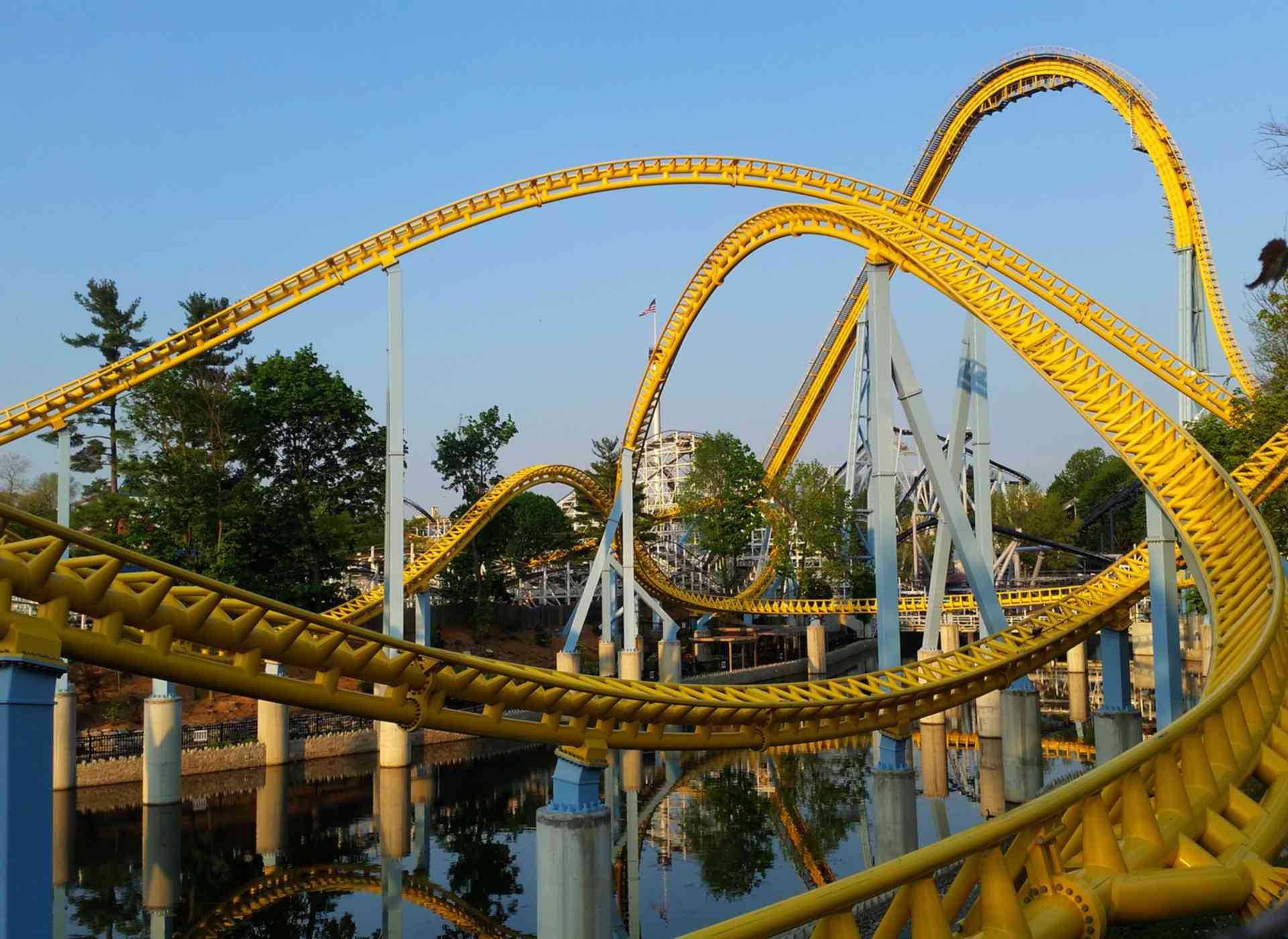



The roller coasters are extreme examples of using steel tube rails, but 1020 3" OD tubing with a 0.25" wall thickness can support point loads of 4,167lbs across 12 wheels, with a 4.2X strength margin, given supports every 36" or less. We'd need automated fixturing and welding of the track components, or perhaps lots of slip joints and band clamps so that no welding of track is required. We could use dual bogies on each end of the locomotive or cars, riding over a pair of these "tube rails", instead of a single track rail per side.
If a dual tube rail track comes in at 200kg per meter, that's still a lot less steel than 60kg/m track used here on Earth, if the track ties are also made from steel, which would push steel consumption over 420kg/m with 100kg ties, but perhaps the answer is that we just need a lot of steel for any practical solution. If we find very rich Titanium deposits, then perhaps we use the Titanium alloy to build the track. Welding Titanium is less problematic on the moon.
To create a length of track sufficient to encircle the equator, which is 10,917km, we need 2,183,400t of steel, at 200kg per meter. A good-sized steel mill will produce about 2Mt to 2.5Mt of steel over a year. We obviously wouldn't run a track around the planet, but the Sulfur, Aluminum, Iron, Titanium, and Magnesium mines could all be located wherever the highest ore concentrations are found, and the colony could be located wherever happens to work best for them.
I read something the other day about using solar power, NaOH, water, and Iron ore, for direct reduction of Iron, or most other metals, without Hydrogen or high heat provided by an external process. It requires a lot of Sodium metal to accomplish, but the moon has plenty of Na2O, so we don't need to import NaOH. The moon has no shortage of solar power during the day.
There's no shortage of Silica on the moon, so bare steel could be protected from the solar wind with a Silicon-based coating, creating a very shiny and hard train track.
SilcoTek SilcoNert CVD coating on stainless tubing: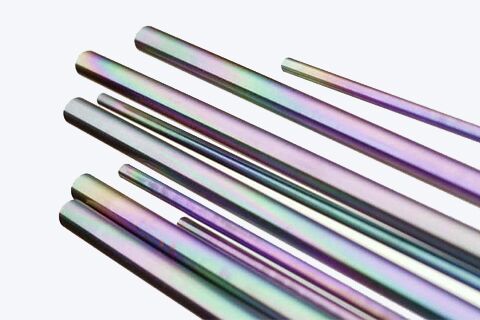
We could coat the train cars and parts as well: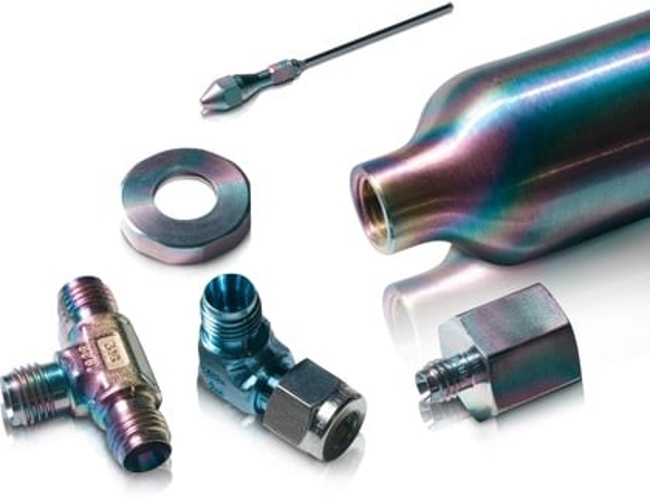
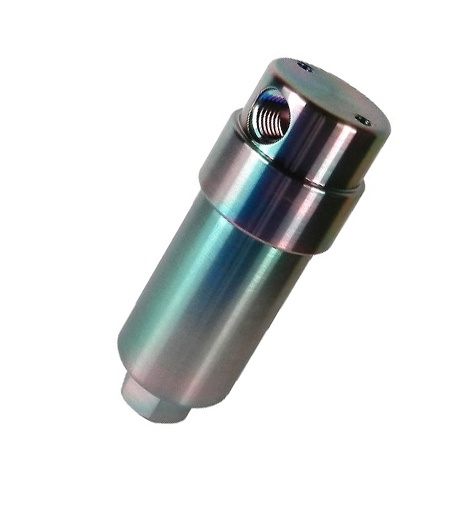
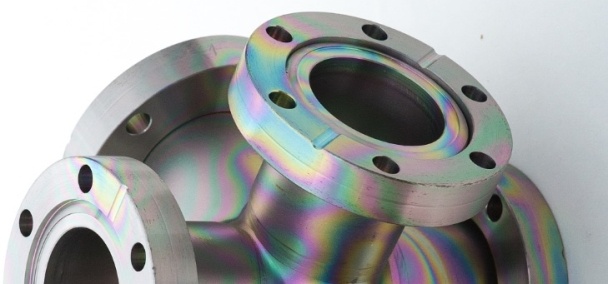
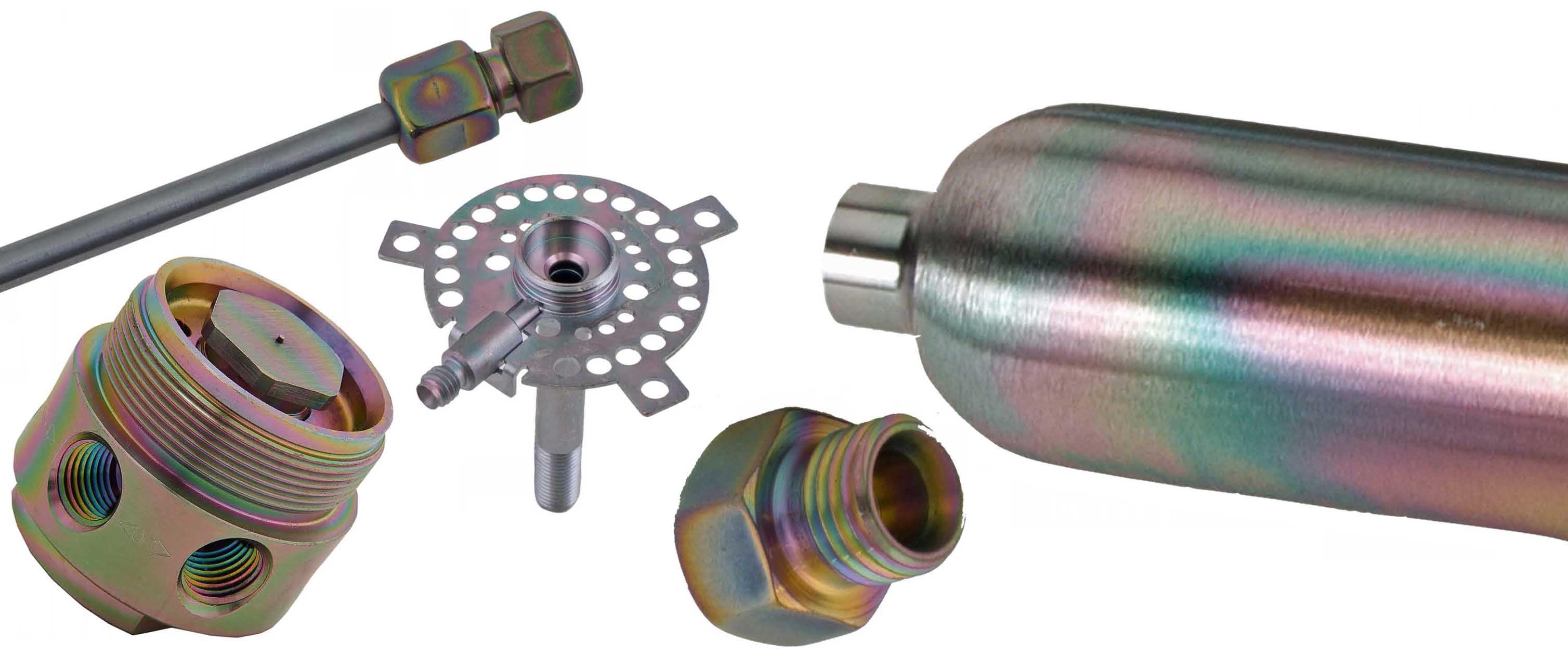
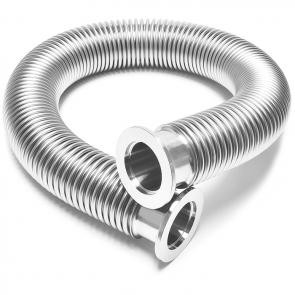


We need metal to build the large ships, and a spin launcher to send that metal into orbit. The moon is the closest off-Earth place to source it from, which would prove we can mass manufacture metal using lunar resources, and that a colony could become self-sustaining after it has the equipment and infrastructure to mine, refine, and machine metal. That provides a way to "cut the umbilical", and the costs to a sponsor nation, for maintaining a space colony. After the colony produces their own locally sourced metal, public funding can wind down and private funding can take over. It's also a way to move heavy industry off-Earth.
Anyway, these are just some ideas to ponder over.
Offline
Like button can go here
#299 2024-05-13 09:59:16
- Calliban
- Member
- From: Northern England, UK
- Registered: 2019-08-18
- Posts: 4,240
Re: Trains on Mars - Could a rail system provide martian need
Having sections of track that can be flanged together on a pre-graded strip of regolith is more efficient solution than having to tie rails to sleepers.
Here is a reference to electrochemical iron reduction in a molten caustic soda flux.
https://ntnuopen.ntnu.no/ntnu-xmlui/bit … sequence=2
Very impressive that this can be done at temperatures of 100°C. This method is compatible with a steady flow process. Molten caustic soda and iron oxide could be continuously fed into the cell and spent mixture would flow out into a long ceramic trough. Solid iron /FeO particles can then be removed from the melt using an electromagnet. Milling would follow, after which pure iron powder can be seperated from residual FeO and silicate contaminants. The pure iron powder can then be turned into steel / cast iron by melting in an electric arc furnace, adding carbon and using an oxygen lance to oxidise impurities.
Last edited by Calliban (2024-05-13 10:01:35)
"Plan and prepare for every possibility, and you will never act. It is nobler to have courage as we stumble into half the things we fear than to analyse every possible obstacle and begin nothing. Great things are achieved by embracing great dangers."
Offline
Like button can go here
#300 2024-06-05 14:32:59
- Mars_B4_Moon
- Member
- Registered: 2006-03-23
- Posts: 9,776
Re: Trains on Mars - Could a rail system provide martian need
Seoul mayor calls for thorough probe into collective blood cancer diagnosis among Seoul Metro employees
https://www.koreatimes.co.kr/www/nation … 76046.html
According to the labor union of Seoul Metro, the operator of subway lines 1-8, eight employees were diagnosed with blood cancer and three of them have died.
All of them were involved in train maintenance work, and suspicions have arisen that the development of hematologic malignancy, or blood cancer, has something to do with their use of organic solvent during maintenance work.
The diagnosis sheet of one of the workers, whose illness was recognized as an industrial accident, said there is a "reasonable causal relationship" between injury and work, as continued exposure to various toxic chemicals during their painting and cleaning duties could have led to the illness.
Offline
Like button can go here




